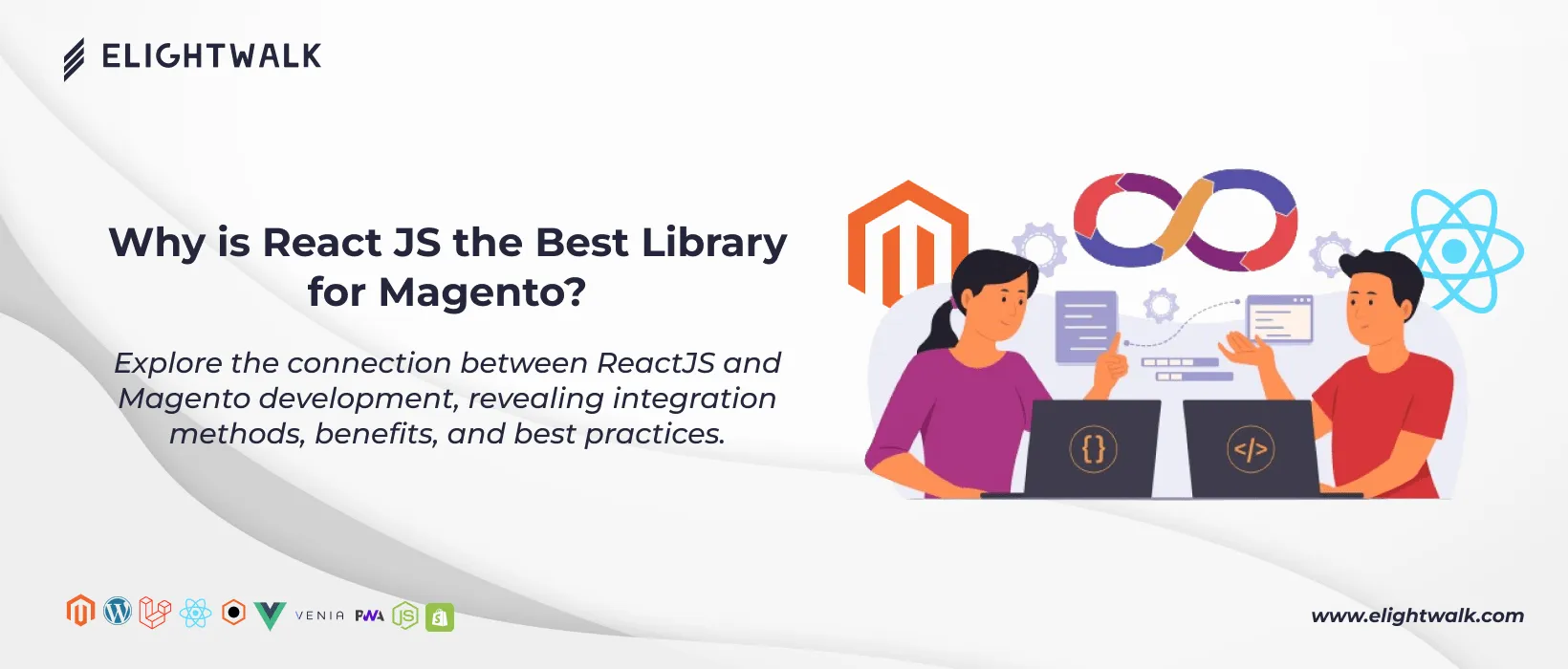Several options are available for integrating React into Magento. Here, we discuss four simple methods for iterating over ReactJS in your project. The method you can choose depends on your project's requirements and functionality.
1. Custom React Integration
Developers can build everything from scratch with ReactJS through custom React integration with Magento. This method offers maximum flexibility but necessitates a thorough grasp of Magento's architecture and React. Choosing this approach means that developers set out to create components from the ground up instead of modifying pre-made templates. This entails designing the entire architecture, including all elements, according to the project's specific needs and requirements. While it necessitates a higher level of expertise and time investment, it provides complete control over the development process and ensures that the final product is precisely the desired outcome.
2. PWA Studio:
Magento PWA Studio is a comprehensive toolkit provided by Magento that is specifically designed to develop progressive web apps (PWAs) on the Magento platform. It uses React, Redux, and Webpack to create high-performance, reliable, visually appealing storefronts that work seamlessly across multiple devices.
Magento's PWA Studio is designed for developers who want to create Magento PWA websites. It includes pre-built components that make it easier to develop Magento React PWAs. While Magento PWA Studio is an excellent resource, it is still in development. Some of the toolkit's components may need to be completed or made inoperable. Nevertheless, developers interested in delving into the world of Magento PWAs can find a wealth of information and insights by investigating the tools offered by Magento Studio.
3. Headless Magento with React Frontend
With the Headless Magento with React Frontend technique, developers can use React for frontend development while Magento serves as the backend only. This allows developers to separate the front end from the back end. Because of this headless architecture's increased flexibility and scalability, developers can use React's powerful features to create dynamic and captivating user interfaces.
Magento will handle backend operations such as data management and processing, allowing developers to focus solely on creating exceptional front-end experiences using React's features. This approach streamlines development and allows for seamless integration of third-party services and technologies, resulting in a modern and versatile e-commerce solution.
4. React Components within Magento Templates
Integrating React components directly into Magento template files allows developers to precisely control the placement and use of React within the Magento application. This approach gives developers granular control, allowing them to use React's capabilities where they are needed while still taking advantage of Magento's powerful backend functionality.
This method may require a bit more configuration and setup to smooth integration. Developers must carefully manage dependencies, resolve conflicts between React and Magento's templating system, and ensure that React components communicate properly with Magento's backend.
Despite the potential complexities, integrating React components into Magento templates allows developers to create highly personalised and interactive user interfaces tailored to their needs. This approach balances React's flexibility and Magento's robustness, resulting in a dynamic and smooth e-commerce experience for users.
The decision to use React in a Magento project should be based on your Magento project requirements. You can choose it based on project requirements and the level of customisation you want for your project. You make it smoother and more flexible with expert advice. Hire our experienced Magento developers to shape your project according to your needs. Contact us for e-commerce solutions and new ideas for your new successful project.
Also Read: Best 11 React Carousel Component Libraries



